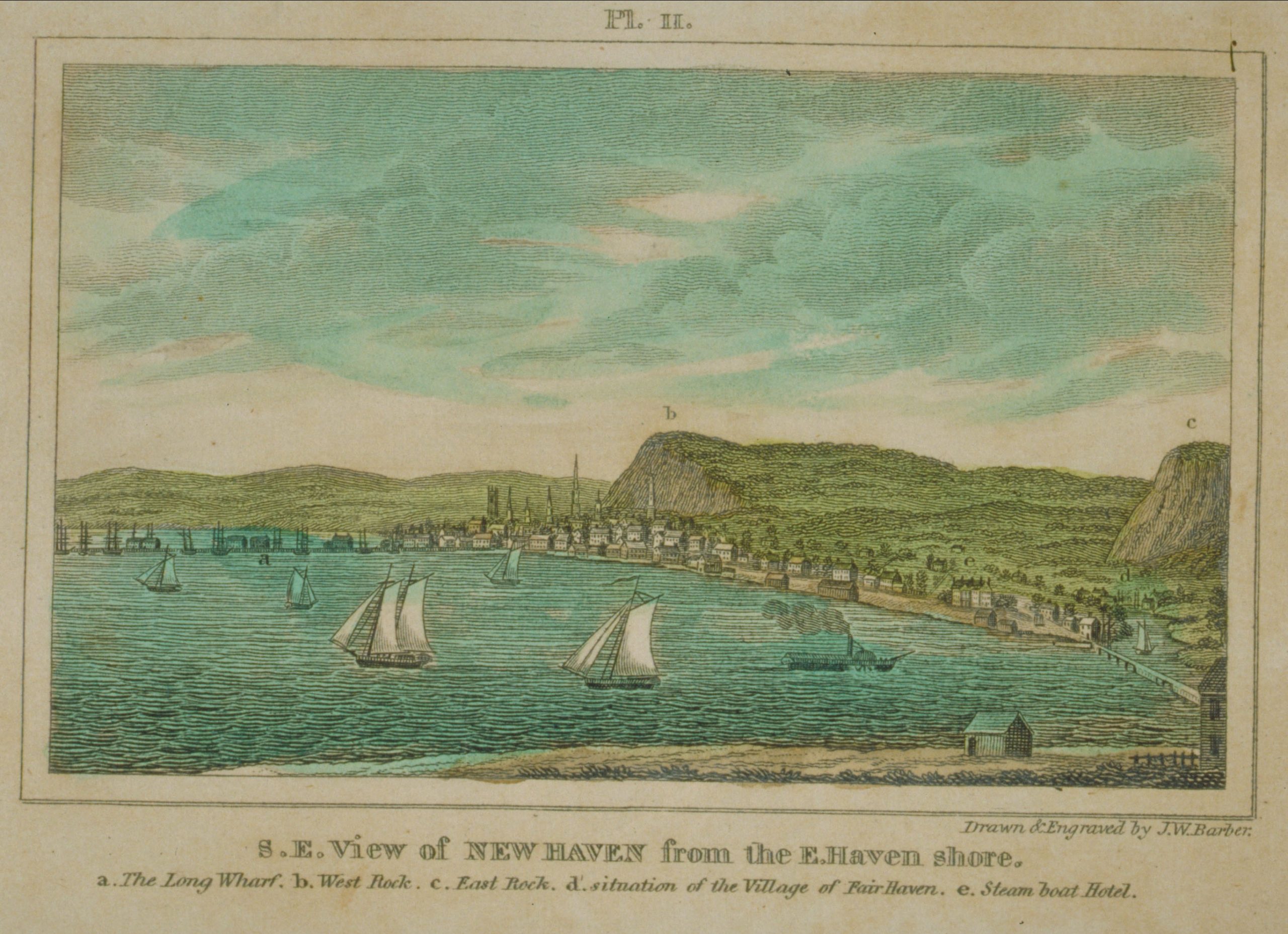Rayna Walters
Highville Charter School, New Haven
TEACHER'S SNAPSHOT
Subjects:
African Americans, Business & Industry, Economics, Individuals in History, Maps, Race, Slavery & Abolition
Course Topics/Big Ideas:
Economic Prosperity and Equity, The Struggle for Freedom, Equality, and Social Justice
Town:
New Haven
Grade:
Grade 8
Lesson Plan Notes
William Lanson was an African American entrepreneur, abolitionist, and civil rights advocate from New Haven. Born around 1785, Lanson was hired to extend Long Wharf in New Haven and to work on the retaining wall of the Farmington Canal. He employed dozens of African Americans for this work. Lanson supported the abolitionist movement and housed many escaped enslaved people. When Connecticut passed a law in 1814 prohibiting people of color from voting, Lanson (unsuccessfully) petitioned the Connecticut General Assembly to be excused from paying taxes on the basis of no taxation without representation. Lanson’s wealth, property holdings, and influence grew throughout the 1820s. In 1825 he was elected “African King,” or Black Governor of New Haven. Lanson was ultimately targeted by those who felt threatened by his success.
ESSENTIAL QUESTION
SUPPORTING QUESTIONS
- What successes were achieved by Lanson?
- What type of backlash did William Lanson face? Why?
- How did Lanson respond to the challenges he met?
- What arguments did William Lanson make in his 1815 petition to the legislature?
- What was the role of a “Black Governor”?
- What was New Haven like during William Lanson’s life?
ACTIVITY
1. Introduce the compelling question and engage students in a brief brainstorm of preliminary answers to the question.
2. Read the National Endowment for the Humanities article by Stacey Close about William Lanson and the ConnecticutHistory.org article about the Black Governors. Have students annotate the articles or pull out main facts they discover about William Lanson and the Black Governors. Introduce the supporting questions and ask what additional questions they have following the readings. Discuss how they might find out more. Introduce the idea of using primary sources from the time to learn more.
3. Separate the students into four working groups. Provide each group with one primary source to analyze: the 1815 petition to the General Assembly; set of maps and views of New Haven from 1817 and 1825; Lanson’s “notice” in the Columbian Register (focusing on the highlighted excerpt); and the Hartford Courant article.
4. Task each group with analyzing their source using the Library of Congress Primary Source Analysis Tool worksheet. They should also consider the supporting questions and what these sources can tell us about William Lanson and/or life in New Haven at the time.
5. Have each group share their findings with the rest of the class. Revisit the students’ initial ideas about the compelling question and have students share new thoughts or answers to the questions.
OPPORTUNITIES FOR ASSESSMENT
- Consider the compelling question and have students engage in research on its relevance today. How does the success of African Americans, Latinx, Indigenous, and other People of Color challenge the status quo? Encourage students to find public figures today who have attained financial success, fought for civil rights, or earned respect within their community or beyond, as William Lanson did. What challenges did they face? How did they overcome obstacles? What work remains to be done? Have students write an essay comparing their current public figure with William Lanson. Allow students to share their work.
- William Lanson was a true entrepreneur. In this spirit, students will brainstorm a business or product of their own and create a marketing flyer/card/plan. What is their product or service? Who is their market? How will they sell it? What resources or additional data do they need?
RESOURCE TOOL KIT
“William Lanson Shaped New Haven” by Stacey Close. Humanities, Winter 2021, Volume 42, Number 1.

“Connecticut’s Black Governors” by Andy Piascik.
Set of three maps/views of New Haven. View individually online or download a PDF document including all three.

Plan of New Haven. Amos Doolittle. New Haven: Surveyed & published by A. Doolittle, engraver, 1817. Library of Congress Geography and Map Division. A map showing the completed Long Wharf.
S.E. view of New Haven from the E. Haven shore. Wood engraving from Views in New Haven and its Vicinity, New Haven, 1825. John Warner Barber. Connecticut Museum of Culture and History. A view showing New Haven Harbor and Long Wharf.
Plan of the city of New Haven, 1825. John Warner Barber. Connecticut Museum of Culture and History. A plan of the city with various buildings and landmarks labeled, including Long Wharf and the “African Church.”
Transcription of Lanson’s “notice” in the Columbian Register, 1829. Courtesy Gilder Lehrman Center, Yale University. Focus on highlighted excerpt.
“Conviction and Sentence of King Lanson.” Hartford Courant, December 13, 1845, page 2.

Bias Stanley and William Lanson: Petition against a Legislative Act, October 1815. The public records of the state of Connecticut, v.17 1814-1815, pages 544-546. Connecticut State Library, courtesy Internet Archive. Original document located in Rejected Bills, Box 2, 1815, folder 19, doc. 45.
ADDITIONAL RESOURCES
Places to GO
William Lanson statue, New Haven
Things To DO
Watch a video from the New Haven Museum: “An Upside Down World: The Reign of Black Governors in Connecticut” with Dr. Kerima Lewis (59:11)
Websites to VISIT
“A Struggle from the Start” online exhibit, Hartford Black History Project
Articles to READ
“The Successes and Struggles of New Haven Entrepreneur William Lanson” by Peter P. Hinks.
“New Haven’s Long Wharf” by Edward T. Howe.
“William Lanson, An Artisan Who Built Beyond Structures” by Stacey Close. Connecticut Explored, Spring 2022.
“Connecticut’s Black Governors” Museum of Connecticut History.
“‘No Taxation without Representation’: Black Voting in Connecticut” by Katherine J. Harris. Connecticut Explored, Spring 2016.
“Emerging from the Shadows, 1775-1819: The Black Governors” The Hartford Black History Project, 1998.



